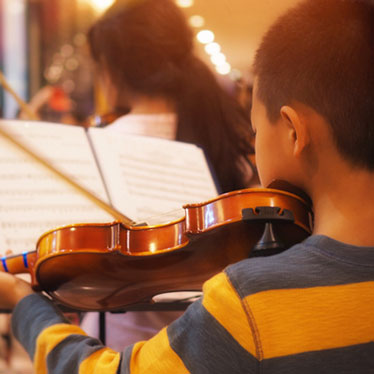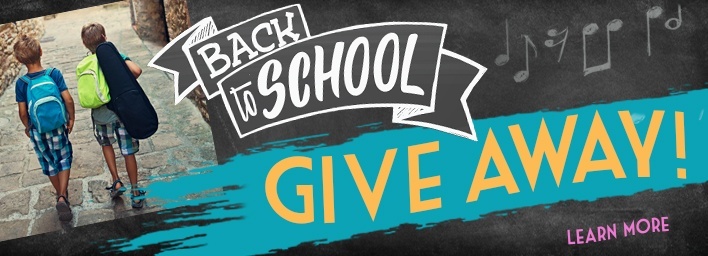3 Innovative Lesson Plan Ideas For Fall

The famous adage, "If it isn't broken, don't fix it," is true in many cases. However, that mentality also leads to stagnation and lack of innovation. As a teacher, creating those tried-and-true lesson plans and then getting into the proverbial autopia track, can wind up keeping you - and your students - from the exhilarating feeling of a newly-inspired lesson plan that takes root.
If you feel like your lesson planning autopia track could use revamping, the following three ideas are yours for the taking.
Fun with Proper Playing Positions
This first tip comes by way of Orchestra Classroom - a fantastic resource for creative lesson plans. Use the re-purposed, proper-position-inspired lyrics to the fun pop song, "Keep Your Head Up," by Andy Grammer. Teach the song and then have students sing along as they position their left hands.
Once that's mastered, download a karaoke version via the free app, Anytune, and use the tools to transpose their version into the key of D. Now you have a way to teach beginning musicians great positioning, as well as the notes to a contemporary pop song. What a fun way to start the Fall music semester.
Make it Improv Week
Whether you work in a public/private school setting or run your own music school, the schedule can feel regimented. There's only so much time to get those students back in musical shape and ready for the Holiday Concert Series, right? As a result, your lesson plans may be pretty page focused, without much room for student creativity and improvisation.
However, advanced musicians know improvisation skills are a must for becoming a strong player. The ability to create on-the-spot derives from a cellular-level experience of music, theory, and how sounds and rhythm fit together to create desirable sounds. If nothing else, the ability to play on the fly can save the next concert from sour notes as students learn how to fudge their way through harmonious alternatives until they find their place in the music score again.
For this reason, think about ways you can introduce, encourage, and support opportunities to build improvisational skills. This could mean taking a portion of every Friday's class for a lighter-hearted foray into improvisation (or music jams). Or you may even take an entire week to play with improvisation and allow students to become more comfortable in the realm of the unplanned and unwritten - which makes future improvisational exercises more fruitful.
Keep in mind:
- Most students will feel more comfortable doing improvisational things in pairs, trios or small groups - rather than solo.
- This is a good opportunity to bring music from other cultures, contemporary music or to allow the children to bring their own (school appropriate) music into the classroom.
- Thinking outside the box and having students improvise from their own beings can be an incredible opportunity for self- and musical growth (improvise based on the way you feel today, create a melody that would help a baby fall asleep, create the sounds of the ocean in the midst of a violent storm, etc.)
Take Your Class Outdoors
Students spend an inordinate amount of their school day inside, sitting down and without much room for play, creativity or movement. Taking a class outside shakes things up and offers multiple benefits. When the weather is nice, consider moving your class outdoors to an appropriate area of campus (a field that isn't used during class time allows musicianship to occur without interrupting other teachers...), using the change in setting to your advantage.
1. Be inspired by Mother Nature.
Have the students spend five, full minutes of silence as they listen to Mother Nature, writing down the sounds they hear- a train, a siren, the birds, laughter from an adjacent P.E. class, a fellow student's cough, the leaves clicking in the breeze, etc.). Then, have them use their instrument to re-create what they heard - getting creative with pizzicato, soft tapping on the body of the instrument, and so on.
2. Test what they know.
Without music stands and the safety net of sheet music, students aren't always aware of how much they really know; conversely, they may be surprised how much they don't know. Use the outdoor time to play relevant pieces sans sheet music - without judgment or shame – as purely an exercise for everyone to see where they're at and what they need to work on.
3. Work on natural body expression.
The classroom may be cramped or simply so routine that it constrains - rather than expands - students' movements. Talk about the importance of movement, music and dance - and then allow students the space to play and move as if nobody were watching. Consider creating a collaborative curriculum with the chorus, dance team, etc., for extra inspiration.
Here's to another year of inspiring young musicians. May these innovative ideas inspire you as well!


